Visual Arts
The beginning of visual arts of Slovaks from Vojvodina and first Slovak artists in Serbia
The visual arts of Slovaks in Serbia nowadays is one of the richest, best and most valuable segment in the contemporary culture of Slovak enclave in Serbia. Nowadays professional Slovak artists are reputable and welcomed in the biggest and most elite galleries and art events in the state one of the most famous artists are the naive artists from Kovačica. On the other hand it wasn’t easy for Slovaks when they arrived 260 years ago to Vojvodina to start with the visual arts. They had a big potential but only in the 19th Century the bigger interest was shown. The first chaplain from Petrovec Štefan Homola in October 1845 was writing for the Slovak newspaper of Štúr Slovenské národné noviny in one of his articles mentioned a death of 26 year old artist called Ján Rohoň (1819 – 1845). Except him there are recording that there was another young artist who also lived only for a short time František Jesenský from Kysáč (08.10.1842- ?). There are few works left in private ownership form which the oldest one is form the year of 1857. There is no evidence left after Ján Rohoň.
There are few names that are mentioned in the Slovak history of visual art but unfortunatelly there arent so many works of art which can be used as a proof of their activity. There are mentioned in the Kroniky petrovského evanjelického a. v. zboru a priest from Petrovec Ján Stehla wrote about the fact that he has sent ont only his sons to study but also his daughters to the Prešov and Budapest.
The oldest picture that is kept is olipainting of one Slovak artist, his name is Benjamín Reis who was active in the half of 19th Century. That painting is being held by the gallery of Zuzka Medveďová in Petrovec.
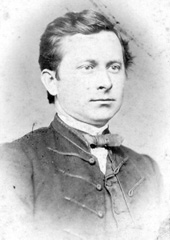 |
| Photography provided by Vladimír Valentík |
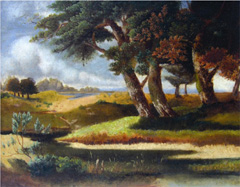 |
| Photography provided by Vladimír Valentík |
After Benjamin Reis there is left one painting of a landscape which has smaller dimensions (32 x 40 cm) and it was held on a rectory in Stará Pazova later on it was given by Ľudmila Hurbanová to a museum in Petrovec. The painting is not signed but most likely it was painted in the 60’s of the 19th Century when Benjamin was a priest in Stará Pazova. Benjamin Reis was born in Petrovec. He studied theology in Halla and Bazilea. In the year of 1866 he was elected as evangelistic priest in Stará Pazova. He died young when he was 32 years old during the cholera epidemic.
Our first artist who left behind many more works and had a longer life is the acasdemic artist Karol Miloslav Lehotský born on November 16th in 1879 in Laliť. He was also the first professional painter and a free artist. He got his art degree on the Academy of visual arts in Prague in a class of Max Pincr and later on ión the Academy in Wien. He was painting and drawing between the Slovaks in Vojvodina mostly in Lalit, Hložany, Ilok and Petrovec but also in Slovakia mostly in Martin, and in Czech in Prague, he died in Brno on March the 4th in 1929.
 |
| Photography provided by Vladimír Valentík |
Karol Miloslav Lehotský is one of the most meaningful Slovak artists in the beginning of the 20th Century not only in Serbia but also in Slovakia. On his paintings except the impressionistic influences and the light usage in his paysages, elements that are noticeable, like decorative symbolism mostly in his later work.
K. M. Lehotský was excellent drawer and hypersensitive artist. On the other hand he is known by the melancholy characteristics, loneliness and mysticism. That is why there are visible in his work his philosophical and theosophical visions which he made visible in a form of art allegory. He mostly was dedicated to landscapes but here in Serbia, paintings which are kept mostly are portraits which indicate that he had portrait forwardness.
Another personality who is one of the builders of Slovak art foundations in Vojvodina is Zuzka Medveďová (1897 – 1985). She was born in Petrovec. Her art talent was improved by her painting studies, firstly due to private lessons in Prague at prof. Engelmüller later, in Zagreb, and finally on the Academy of visual arts in Prague in a class of Jakub Obrovský and Max Švabinský.
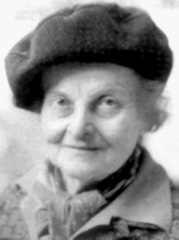 |
| Photography provided by Vladimír Valentík |
The art work of Zuzka Medveďová continues in a tradition of Slovak folk genres of painting which basics were laid in the half of the 19th Century by the Slovak painter and lithographer Peter Michal Bohúň (1822 – 1879). The orientation that Bohúň had was fundamental for the artwork of Zuzka. Later on her painting became ethnographical. Besides Zuzka Medveďová painted portraits of many meaningful personalities.
In time of Karol Miloslav Lehotský and Zuzka Medveďová a bigger interest in visual arts arose in our environment. There have been organized first exhibitions of art works and Petrovec became the center of visual art life of Slovaks from Vojvodina. More talented people started to paint although it was an amateur work but still there was a lot of earnestness. These were the fundaments for further art work which continued to evolve until present time and it is still evolving.
Visual arts of Vojvodina’s Slovaks are integrated into the context of contemporary arts in Serbia but also it tries to fit into the concept of Slovak visual art. But because of the local characteristics it has made itself an autonomous context which is called the visual arts of Vojvodina’s Slovaks.
When it comes to a cultural context of Vojvodina’s Slovaks visual arts there are many artists who achieved great successes in Serbian art or only in Slovak art, but who when it comes to the minority visual art work of Slovaks from Vojvodina they did not enter into this part of art history. These Slovaks were operating in Serbia to be more correct in Belgrade.
The first Slovak artist who ordained for a short time in Belgrade was one of the most meaningful Slovak painters in 19th Century Jozef Božatech Klemens (1817 – 1883) who has arrived to Belgrade in the year of 1855 due to the invitation of Janko Šafárik. He worked as art pedagogue and sculptor who in that period have made a bust of Karađorđe.
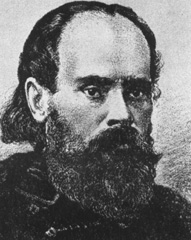 |
| Photography provided by Vladimír Valentík |
One of the most meaningful personality in Serbian visual arts is Cyril Kutlík (1869 – 1900) who has found the first art school in Serbia. The first drawing and painting school started on September the 3rd 1895 the number of applicants was 80 and 30 of them started with the education.
Cyril Kutlík was successfully leading the school until the year of 1900, despite the circumstances and the obstacles of few artists and government department which did not support his idea financially. Kutliks Srpska crtačko-slikarska škola art school did not lapse it was sold to Rista and Beta Vukanovićovci. Later on, after the First World War the Kutliks school became a public body and on its grounds in the year of 1937 the Art Academy in Belgrade was founded.
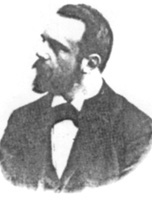 |
| Photography provided by Vladimír Valentík |
Cyril Kutlík perceived his school as a preparation for the talented ones which was supposed to help them in their further studies abroad or to help them to be art teachers who were in that time very needed. His goal was achieved. His most talented pupils Dragomir Glišič, Borivoje Stanković, Kosta Miličević, Milan Milanović and Nadežda Petrovićová were pioneers of the modern art in Serbia.
Cyril Kutlík has always been in touch with the Slovaks from Vojvodina. Mostly those were with his familly members. His grand father Ján Kutlík (II.) was a teacher in Stará Pazova where the Cyrils father Bohdan was born. His uncle Félix was a priest in Kulpín.
Cyril Kutlík during his stay in Belgrade beside his pedagogue work he also painted. The most famous work of that period were : Čukur česma, Manastir Vratna, Čučuk Stana, Apoteoza izmirenja Aleksandra Obrenovića sa knezom Nikolom Crnogorskim, Kraljević Marko ubija Aždaju and for the exhibition in Paris in the year of 1900 he was making a painting called Ulazak svetog Save u Jerusalim. Cyril Kutlík with his historical compositions, genre scenes and portraits became a part of Serbian national romanticism.
The third important personality in the field of visual arts is Ján Koniarek (1878 – 1952) who is one of the most menaningful sculpturist in the 20th Century. He spent part of his creative part of life in Belgrade. He studied in Budapest and Rome. Later on he worked in Munich as an assistent where he met many students from Serbia, because of what he decided to come back to Serbia. Firstly he wored in Serbian town called Čačak, later in year 1908 he moved to Belgrade, where he worked like an visual art pedagogue. In Blegrade he attended many sculpturing competitions. On one of them he won with his preposition for Čukur česma.
Beside all mentioned he made a monument in Svilajnac dedicated to Sindelić also he has made busts of the royal family Aleksandra Karađorđevića, Nikolu Pašića, Minu Pavlovića, Uroša Predića and many other meaningful personalities. His most meaningful work of the “Belgrade period” is The head of John the Baptist which is kept in the collection of the National Museum in Belgrade. This Koniarek’s work has won many awards not only in Belgrade, but also in Sofia, Munich and Brussels.
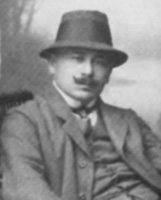 |
| Photography provided by Vladimír Valentík |
Ján Koniarek joined the Serbian art exhibitions. With the Serbian artists he showed in the year of 1908, on the First exhibition of Serbian art association, later in the year of 1910 in Sombor on the First serbian art exhibition and again in Belgrade on exhibitions of serbian artists association called Lada. Also he had an exhibition in the year of 1912 in Belgrade called the fourth Yugoslavian art exposition. The art work of Ján Koniarek in Belgrade was stopped with the Balkan war in which he participated as a warrior. His art atelier in Belgrade was demolished during the First World War. After the war Koniarek moved to Slovakia.
This text about the beginings of the visual arts of Vojvodina’s Slovaks and about the artists who were active in the past on the territory of Serbia is only a basic information about this not enough researched area. There certainly are many other personalities from the territory of Serbia who were Slovaks and aren't mentioned in this text. One of them is Adam Poničan jr. who later was a proffesor on the Art Academy in Segedin. There is preserved only one his painting which is kept in a Slovak town called Padina, it is a lanscape of the Ďuriš sálaš and in the Padina's church the altar painting. Other meaningful person is Daniel Abafi. He is known due to the paintings which are kept by the family of the bishop Andrej Beredi in a Slovak town called Kysáč. This part of the Vojvodina’s Slovak heritage needs a further and thorough research.
Vladimír Valentík
















